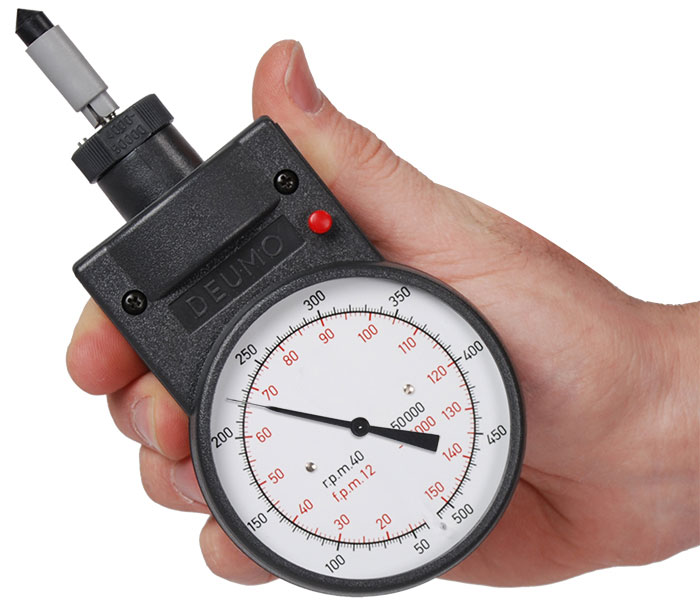Checking Out the Features and Benefits of a Tachometer: A Comprehensive Overview for Cars And Truck Fanatics
From giving real-time information on engine speed to aiding in enhancing gear shifts, the tachometer serves as even more than just a dial on the dashboard. Its multifaceted functions not just enhance driving experience however also play a critical function in keeping engine wellness and effectiveness.
Understanding the Fundamentals of a Tachometer
In the realm of automobile instrumentation, comprehending the fundamentals of a tachometer is necessary for any cars and truck enthusiast looking to dive into the ins and outs of engine performance surveillance. A tachometer, frequently presented on the control panel of a car, determines the engine's changes per minute (RPM)
Tachometers typically have actually a scale marked in transformations per minute, with a redline indicating the optimum rate at which the engine can safely operate (tachometer). This information is vital for stopping engine damage and enhancing gear moving for hands-on transmissions. Furthermore, tachometers can assist in detecting engine problems such as misfires or a falling short ignition system by detecting irregular RPM analyses
Relevance of Keeping Track Of Engine Rate

Monitoring engine rate is an important element of vehicle upkeep and performance optimization for auto enthusiasts and experts alike. The engine rate, determined in revolutions per minute (RPM), suggests just how fast the engine's crankshaft is revolving. By maintaining a close eye on the RPM, vehicle drivers can make certain that the engine is running within the optimum array, avoiding possible damage from over-revving or delaying. Checking engine rate is particularly important throughout equipment changes, as it aids chauffeurs determine the correct time to transform equipments for smooth acceleration and reliable gas intake.
In addition, tracking engine rate can likewise provide useful understandings into the general health and wellness of the lorry. Uncommon changes in RPM may indicate issues such as a stopped up air filter, gas system issues, and even engine misfires. By finding these problems early via the tachometer readings, drivers can address potential concerns promptly, preventing much more extreme damage and costly repair work down the line. Overall, keeping an eye on engine rate with a tachometer is a basic technique that can boost driving performance, lengthen engine life, and guarantee a safer and much more pleasurable driving experience.
Enhancing Efficiency With Gear Shifts
Appropriate equipment changing guarantees that the engine operates within its optimal power band, allowing for smooth acceleration and boosted gas economy. When shifting equipments, it is crucial to pay attention to the engine speed indicated on the tachometer.

To accomplish peak efficiency with equipment changes, drivers need to exercise smooth and prompt transitions between gears, matching engine rate with road speed to harness the complete capacity of their vehicle's powertrain.
Maximizing Effectiveness With a Tachometer
Mastering the art of gear moving in high-performance lorries not only boosts driving experience yet also plays an essential function in optimizing efficiency with a tachometer. tachometer. By paying close interest to the tachometer readings, chauffeurs can maximize their gear shifts to operate within the engine's most effective range. When accelerating, moving equipments at the right RPM suggested by the tachometer can stop the engine from exhausting anchor or underperforming, resulting in enhanced fuel effectiveness and total performance
Additionally, a tachometer helps motorists avoid unneeded revving, which not just throws away fuel yet additionally puts unneeded strain on the engine. website link Consistently keeping an eye on the tachometer while driving permits smoother equipment transitions, decreasing damage on the transmission system with time.

Advanced Tips for Tachometer Application
To delve into advanced ideas for tachometer utilization, take into consideration including the usage of change lights. Change lights are visual indications that illuminate when it's time to change equipments based on engine transformations per min (RPM), allowing for seamless gear changes without constantly checking the tachometer. By fine-tuning change factors and establishing cautioning thresholds, chauffeurs can optimize velocity and engine performance while reducing the threat of over-revving.
Verdict
To conclude, the tachometer offers as an essential tool for cars and truck lovers to keep an eye on engine speed, improve performance with gear shifts, and maximize performance. By comprehending the features and benefits of a tachometer, drivers can enhance their driving experience and lengthen the life-span of their lorry. Using innovative pointers for tachometer use can better improve driving skills and general efficiency when driving.